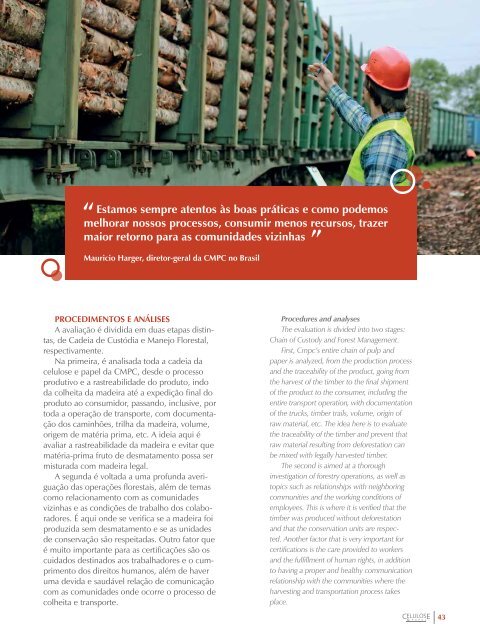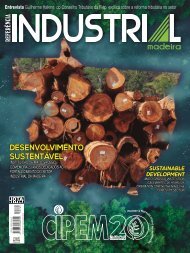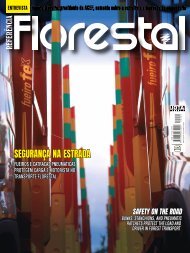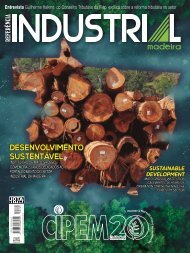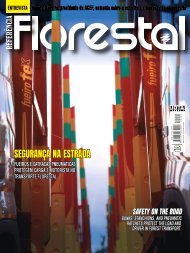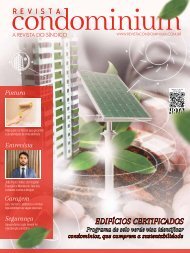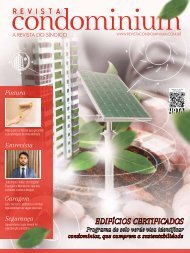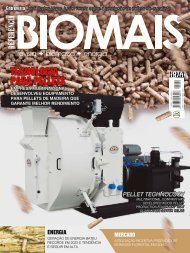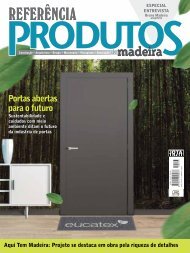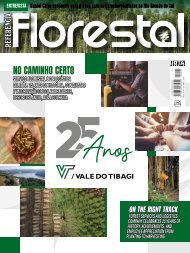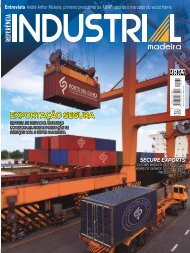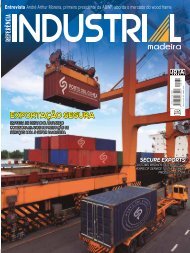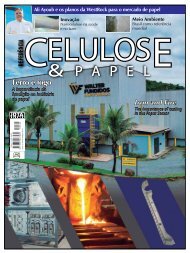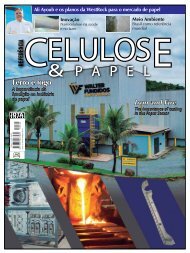Create successful ePaper yourself
Turn your PDF publications into a flip-book with our unique Google optimized e-Paper software.
Estamos sempre atentos às boas práticas e como podemos<br />
melhorar nossos processos, consumir menos recursos, trazer<br />
maior retorno para as comunidades vizinhas<br />
Mauricio Harger, diretor-geral da CMPC no Brasil<br />
PROCEDIMENTOS E ANÁLISES<br />
A avaliação é dividida em duas etapas distintas,<br />
de Cadeia de Custódia e Manejo Florestal,<br />
respectivamente.<br />
Na primeira, é analisada toda a cadeia da<br />
celulose e papel da CMPC, desde o processo<br />
produtivo e a rastreabilidade do produto, indo<br />
da colheita da madeira até a expedição final do<br />
produto ao consumidor, passando, inclusive, por<br />
toda a operação de transporte, com documentação<br />
dos caminhões, trilha da madeira, volume,<br />
origem de matéria prima, etc. A ideia aqui é<br />
avaliar a rastreabilidade da madeira e evitar que<br />
matéria-prima fruto de desmatamento possa ser<br />
misturada com madeira legal.<br />
A segunda é voltada a uma profunda averiguação<br />
das operações florestais, além de temas<br />
como relacionamento com as comunidades<br />
vizinhas e as condições de trabalho dos colaboradores.<br />
É aqui onde se verifica se a madeira foi<br />
produzida sem desmatamento e se as unidades<br />
de conservação são respeitadas. Outro fator que<br />
é muito importante para as certificações são os<br />
cuidados destinados aos trabalhadores e o cumprimento<br />
dos direitos humanos, além de haver<br />
uma devida e saudável relação de comunicação<br />
com as comunidades onde ocorre o processo de<br />
colheita e transporte.<br />
Procedures and analyses<br />
The evaluation is divided into two stages:<br />
Chain of Custody and Forest Management.<br />
First, Cmpc’s entire chain of pulp and<br />
paper is analyzed, from the production process<br />
and the traceability of the product, going from<br />
the harvest of the timber to the final shipment<br />
of the product to the consumer, including the<br />
entire transport operation, with documentation<br />
of the trucks, timber trails, volume, origin of<br />
raw material, etc. The idea here is to evaluate<br />
the traceability of the timber and prevent that<br />
raw material resulting from deforestation can<br />
be mixed with legally harvested timber.<br />
The second is aimed at a thorough<br />
investigation of forestry operations, as well as<br />
topics such as relationships with neighboring<br />
communities and the working conditions of<br />
employees. This is where it is verified that the<br />
timber was produced without deforestation<br />
and that the conservation units are respected.<br />
Another factor that is very important for<br />
certifications is the care provided to workers<br />
and the fulfillment of human rights, in addition<br />
to having a proper and healthy communication<br />
relationship with the communities where the<br />
harvesting and transportation process takes<br />
place.<br />
43


